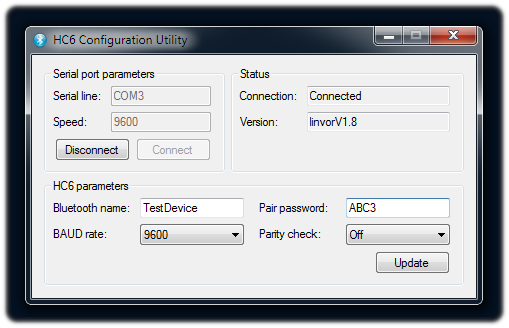HC-06 is a quite popular slave mode Bluetooth module designed for wireless serial communication. This module can pair with PC, mobile phone or with any master mode Bluetooth peripheral.
This simple .net framework based application can use to modify the following parameters of the HC-06 Bluetooth module:
This application communicates with the HC-06 module through COM port. To emulate the COM port using any Windows compatible USB to Serial converter. While at the testing we try the following modules with this application:
This application is developed using .net framework 4.5 and Visual Studio 2012. All source code and compiled binaries are available to download at https://github.com/dilshan/hc6-config. This application and its source code are distributed under the terms of MIT License.
 |
| HC-06 Bluetooth module |
This simple .net framework based application can use to modify the following parameters of the HC-06 Bluetooth module:
- Bluetooth display name
- Pair password
- BAUD rate
- Parity check type
 |
| HC-06 Bluetooth module programmer |
This application communicates with the HC-06 module through COM port. To emulate the COM port using any Windows compatible USB to Serial converter. While at the testing we try the following modules with this application:
- FTDI FT232 USB to Serial module
- CH340 USB to Serial module
- CP2102 USB to Serial module
This application is developed using .net framework 4.5 and Visual Studio 2012. All source code and compiled binaries are available to download at https://github.com/dilshan/hc6-config. This application and its source code are distributed under the terms of MIT License.
Comments